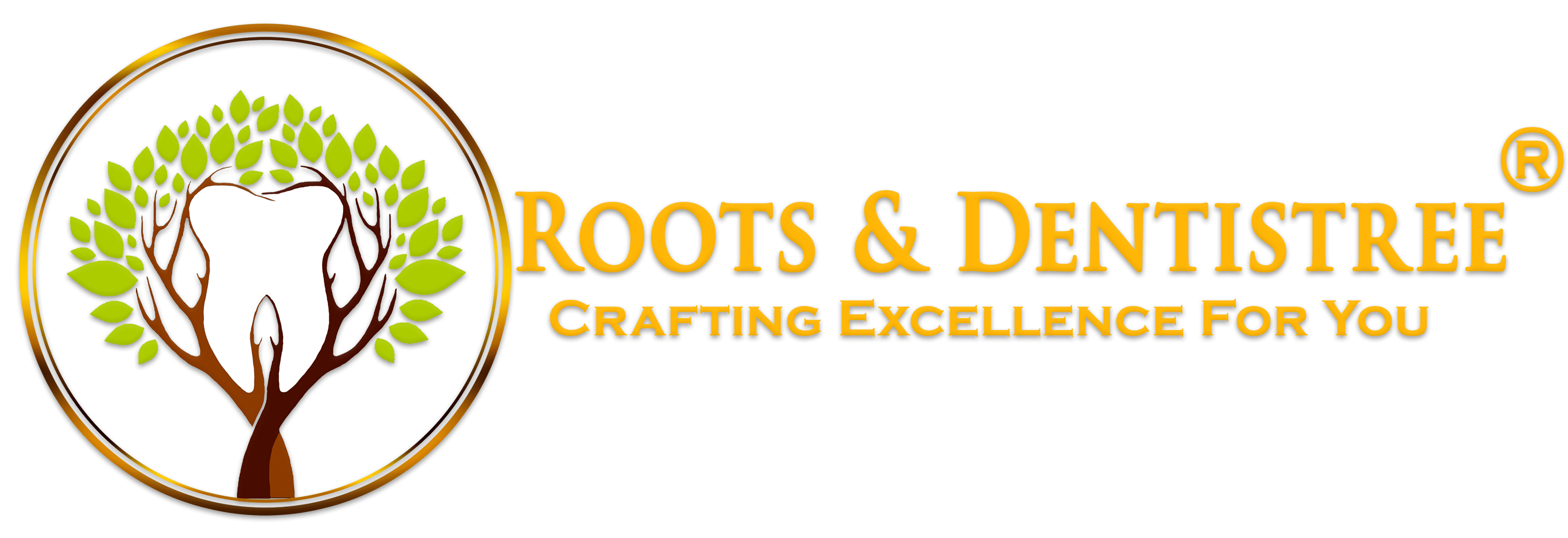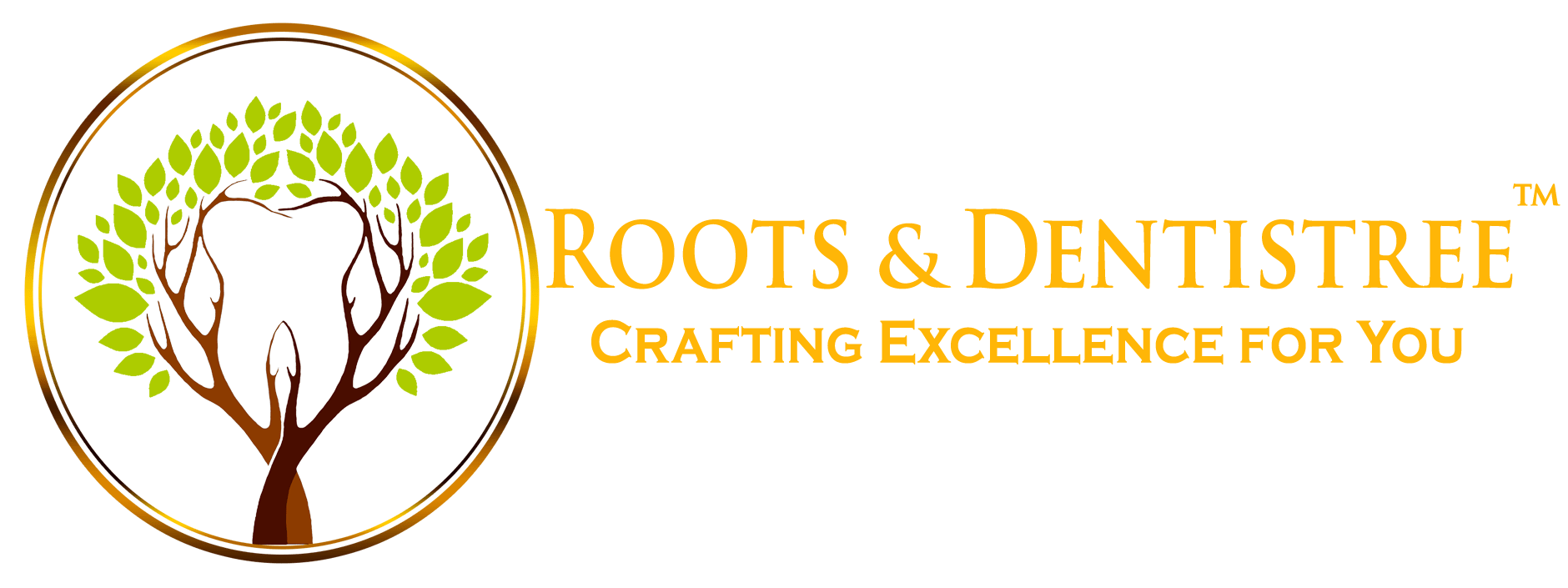SUGAR!! The Bitter Truth..
"SUGAR"- The Ultimate Weapon For Tooth & Health Destruction...
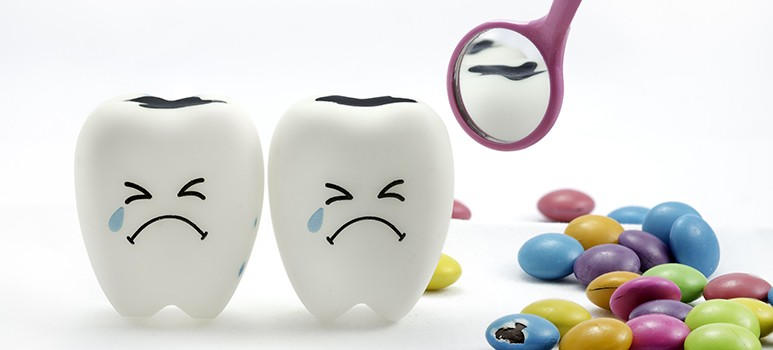
Sugar feeds the bacterial plaque that is present in our mouths. Some of the bacteria in plaque convert these sugars into acid, which can dissolve tooth enamel. This is the process that most often causes cavities to develop and grow. Once tooth structure is gone, we cannot get it back.
There are two ways that individuals can protect tooth enamel at home:
- Remove plaque from all tooth surfaces every day. Check out our post about Brushing for more information on this topic.
- Reduce the amount and frequency of sugar intake in the diet, so that plaque bacteria have less sugar available to convert into tooth-damaging acids.
Types of Sugars: Intrinsic Sugars, Free Sugars, and Added Sugars
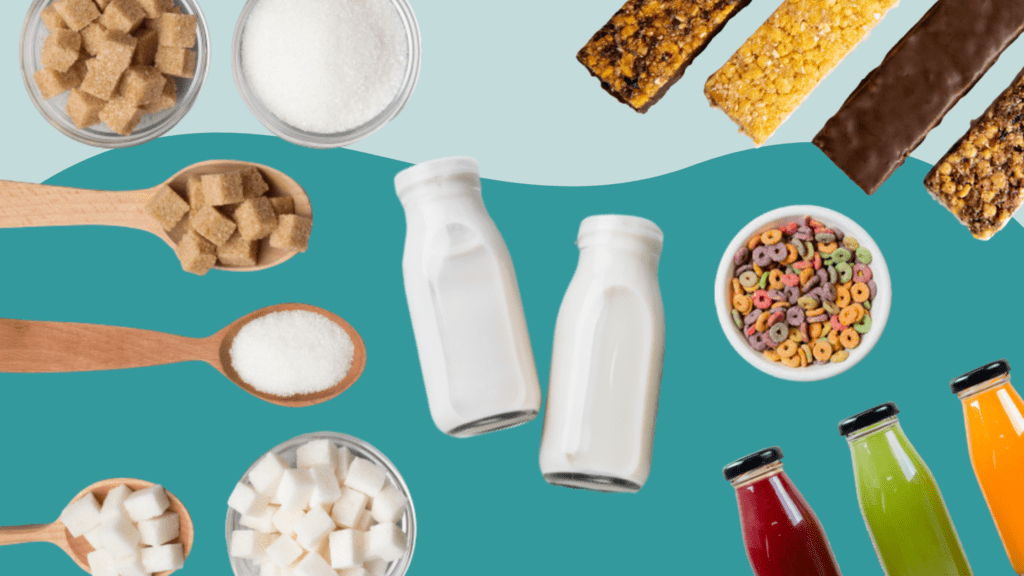
Some foods contain natural sugars, which are also called intrinsic sugars. These foods include intact (unprocessed) fruits and vegetables, and milk and milk products like cheese.
Other foods contain added sugars, which the World Health Organization refers to as free sugars. Free sugars include:
The types of sugars which are added to foods and beverages by the manufacturer, cook or consumer
Sugars naturally present in honey, syrups, fruit juices and fruit juice concentrates.
To prevent tooth decay and unhealthy weight gain, the World Health Organization (WHO) recommends that free sugars make up no more than 10% of daily kilojoule intake. For a healthy adult, this equates to 12 teaspoons (or 50 grams) of free sugars per day.
The World Health Organization has also said that a “reduction to less than 5% of total energy intake would provide additional health benefits.”
So a better goal for healthy adults to have is to consume no more than 6 teaspoons (25 grams) of free sugars each day.
A report from 2017 revealed that the majority (81%) of free sugars consumed in Australia come from energy-dense, nutrient-poor ‘discretionary’ foods and beverages.
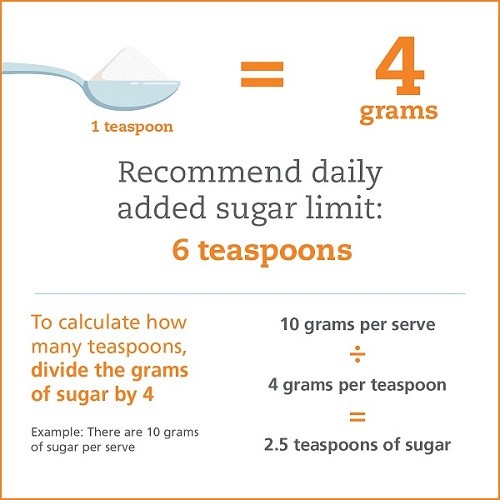
How Do You Know How Much Added Sugar Is In Your Food?
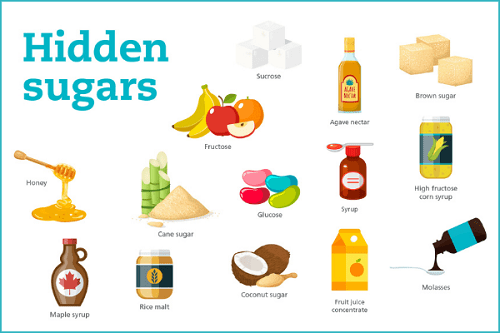
It would be reasonable to assume that food labelling makes it easier to know what we’re consuming. But there are some challenges when interpreting food labels, especially when it comes to sugars.
Nutrition Information Panels Do Not Quantify Added Sugars
The Nutrition Information Panels on our foods provide a snapshot of the ingredients and quantity of important nutrients. However, sugar is reported as “Total Sugars”, a term that includes both intrinsic sugars (from milk and fruit) and free sugars (sugars that are added during preparation).
So it’s not possible to know how much added sugar, in grams or teaspoons, the food contains. From the ingredient list, we can see whether free sugars (including sweeteners like honey and syrups) have been added to the food. And we know that the closer to the top of the list, the more of that ingredient has been used.
But, because the ingredient quantity isn’t recorded as teaspoons or grams, we still do not know the amount of added sugar we’re consuming when we consume that particular product.
No Matter The Source, All Sugars Can Lead to Tooth Decay
Sugars derived from coconuts, dates, beet, barley or rice is just as capable of causing tooth decay as sugar derived from cane sugar.
“There Is No Such Thing As Tooth-Friendly Sugar”.
Improved Food Labelling Could Help
We would love to see Nutrition Information Panels provide information that makes it easier for INDIANS to see how much added sugar is in their foods. A system that quantifies added sugar in teaspoons per serve would make it much easier for one to monitor their daily intake of added sugar.

